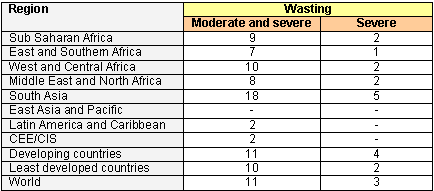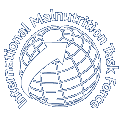Acute malnutrition is the result of a relatively short period of inadequate nutrition which leads to wasting and, if severe, may also lead to oedema. Acute malnutrition should be differentiated from chronic malnutrition, which is the result of prolonged episodes of inadequate nutrition and leads to stunting.
Acute malnutrition may be classified as severe or moderate. Both are serious global problems that contribute significantly to under 5 child mortality.
 Acute malnutrition can be seen at any age but is common in infants and young children and is linked with poor feeding practices, poor hygiene, and illness. Inadequate nutrition during pregnancy can precede both acute and chronic malnutrition.
Acute malnutrition can be seen at any age but is common in infants and young children and is linked with poor feeding practices, poor hygiene, and illness. Inadequate nutrition during pregnancy can precede both acute and chronic malnutrition.
Left: Malnutrition contributes to 60% of child deaths (Source: WHO, 2002)
Prevalence of acute malnutrition
The following table shows the prevalence of malnutrition, both moderate and severe, worldwide.
Table: Prevalence of acute malnutrition (Source: UNICEF, 2008)
 The prevalence of oedematous malnutrition without wasting is not known, so rates of severe acute malnutrition may be higher than shown.
The prevalence of oedematous malnutrition without wasting is not known, so rates of severe acute malnutrition may be higher than shown.
Current estimates by WHO suggest that about 1 million children die every year from severe acute malnutrition (WHO, WFP, SCN & UNICEF, 2007).
